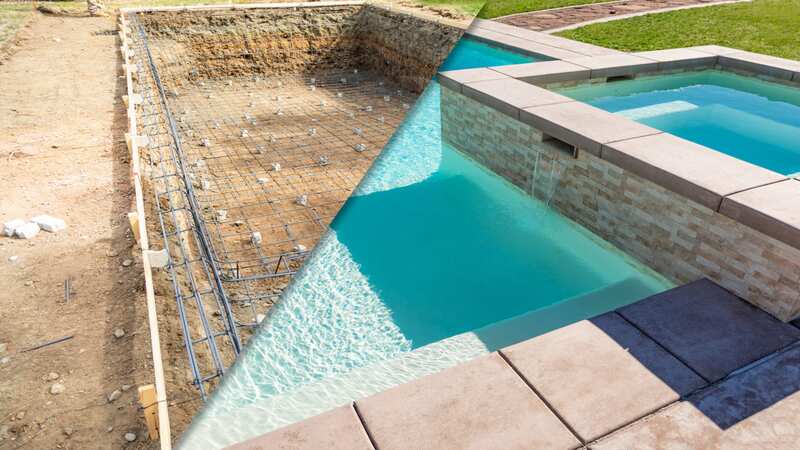Introduction
Many of us dream of adding a swimming pool to our backyard or commercial space. A place where you can relax, exercise, and create lasting memories with family and friends. However, constructing a swimming pool is a significant investment that requires careful planning and execution. In this comprehensive guide, we will walk you through the step-by-step process of swimming pool construction, covering everything from initial planning to the final touches.
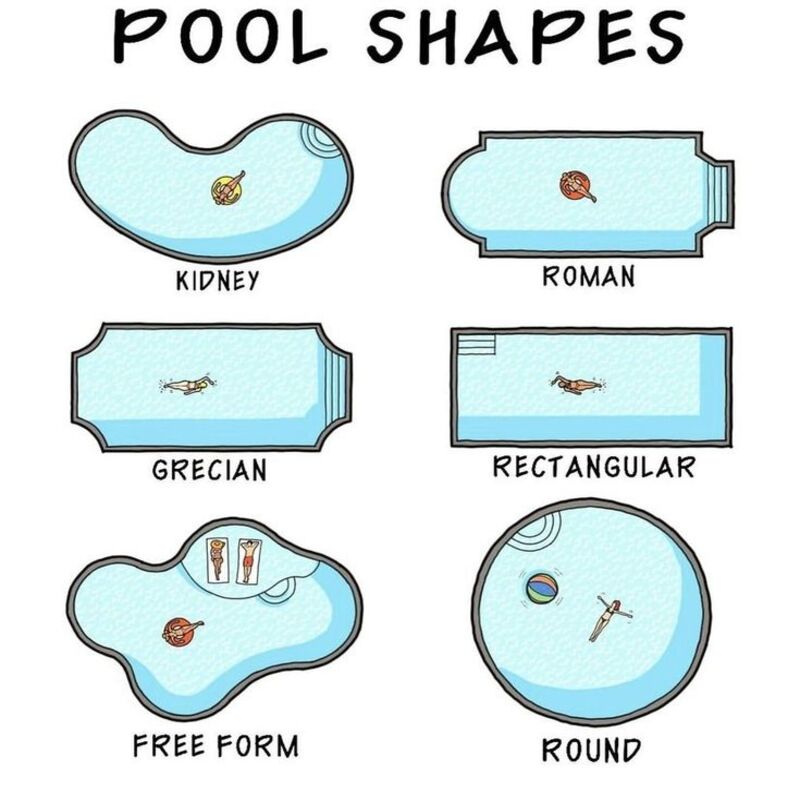
Step 1: Swimming Pool Planning and Design
a) Choosing the Right Pool Type
Before embarking on your pool construction journey, you’ll need to determine the type of pool that best suits your needs, lifestyle, and budget. The most common options include:
- Concrete (Gunite) Pools
- Fiberglass Pools
- Vinyl Liner Pools
Each type of pool has its own advantages and disadvantages, so it’s essential to research and understand the differences to make an informed decision.
b) Designing Your Dream Pool
With the pool type selected, it’s time to design your dream pool. Consider factors such as size, shape, depth, and any desired features like waterfalls, slides, or built-in seating areas. Work closely with a professional pool designer to bring your vision to life while ensuring compliance with local building codes and regulations.
c) Obtaining Necessary Permits
Swimming pool construction typically requires permits from your local authorities. These permits ensure that your pool construction adheres to safety standards and zoning regulations. Your pool contractor or designer can guide you through the permitting process and prepare the necessary documentation.
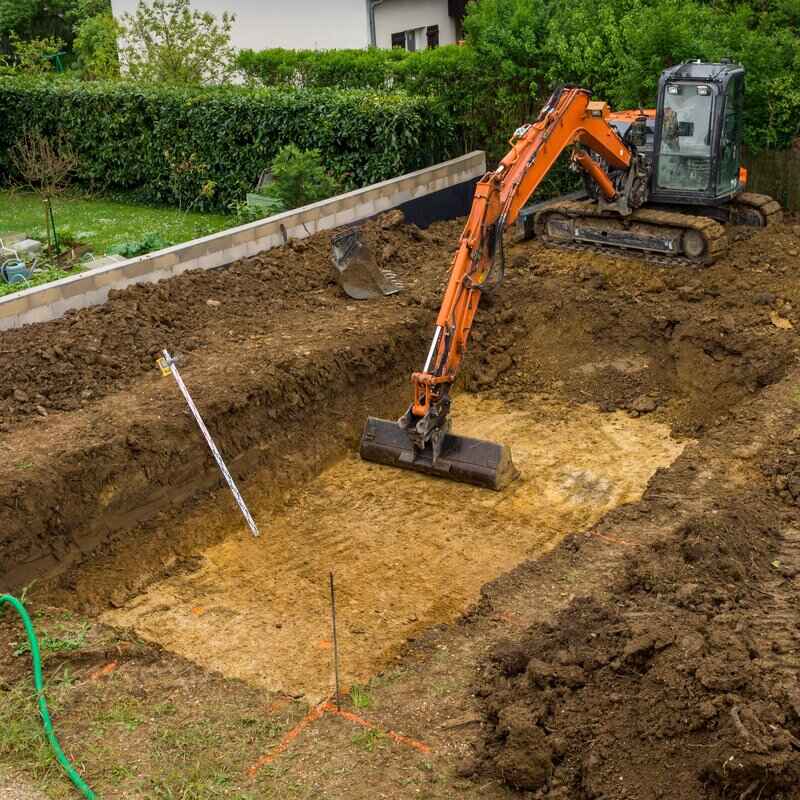
Step 2: Swimming Pool Site Preparation
a) Excavation and Grading
Once the team approves the plans and secures the permits, they begin site preparation. They bring in heavy machinery to excavate the area where they will construct your pool. They then remove or redistribute the excavated soil on your property as needed.
b) Utilities and Access
Before digging, it’s crucial to locate and mark any existing utilities, such as water lines, electrical cables, or gas lines, to avoid potential damage. Your contractor will also ensure adequate access to construction equipment and materials.
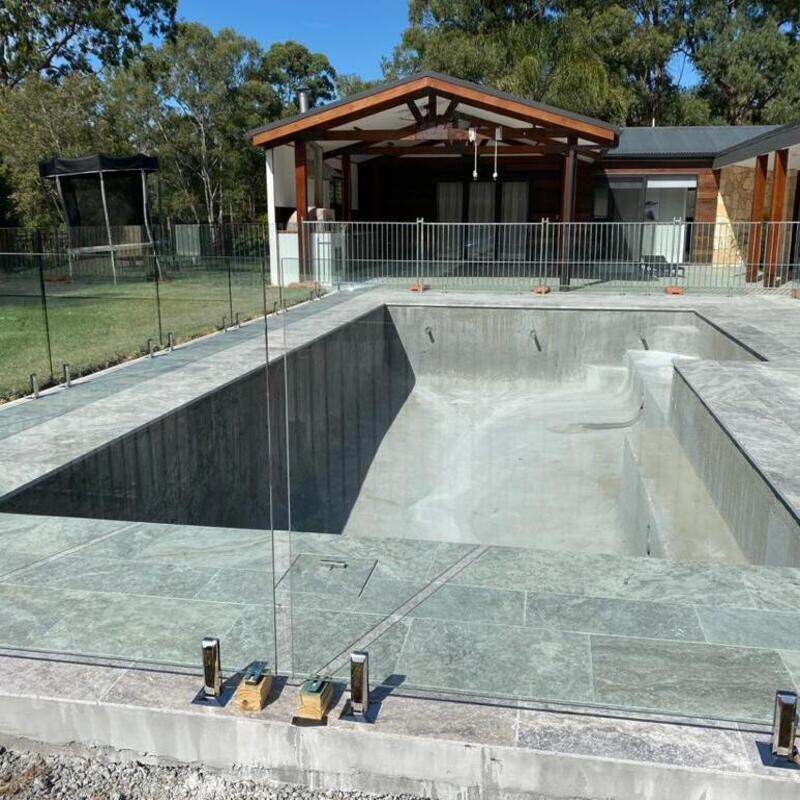
Step 3: Swimming Pool Installation
a) Laying the Foundation
A solid foundation is essential for supporting the weight of the pool and preventing future shifting or cracking. For concrete pools, this typically involves pouring and levelling a reinforced concrete base. For fibreglass or vinyl liner pools, a reinforced steel or polymer structure may be installed.
b) Installing the Pool Shell
With the foundation in place, it’s time to install the actual pool shell. For concrete pools, this involves setting up reinforcing steel rods and spraying or pouring the concrete into the prepared hole. For fibreglass or vinyl liner pools, the pre-formed shell is lowered into place and secured.
c) Plumbing and Electrical Systems
As the pool shell is being installed, the plumbing and electrical systems are also put in place. This includes running pipes for the pool’s circulation system, setting up the electrical connections for the pump, filter, and any other pool equipment or features like lighting or heating.
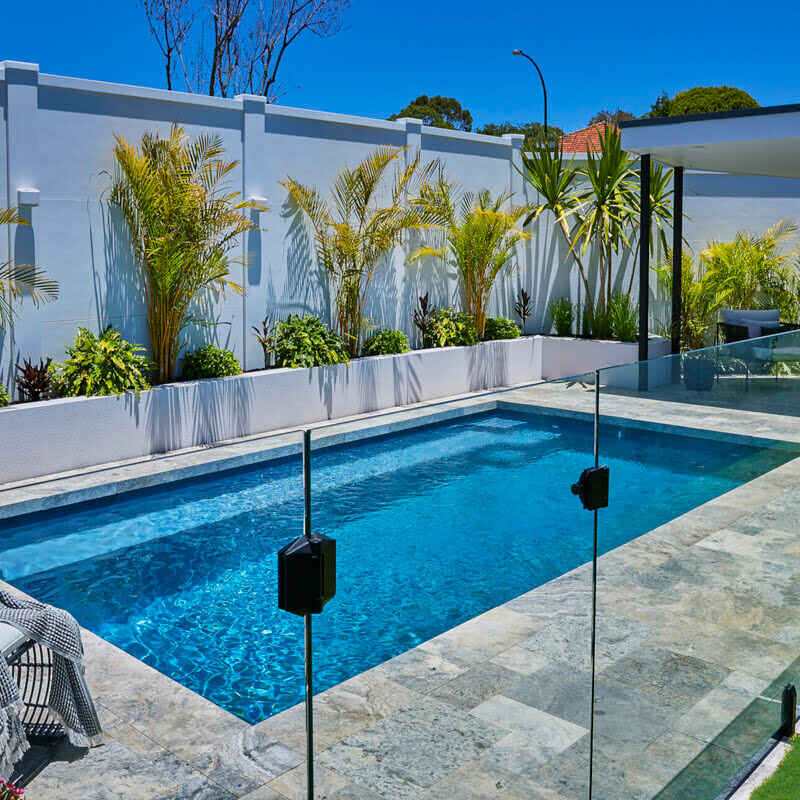
Step 4: Finishing Touches
a) Decking and Landscaping
Once the pool installation is complete, it’s time to focus on the surrounding area. This may involve pouring concrete for a pool deck, installing patio pavers, building retaining walls, or creating landscaped areas with greenery and other aesthetic features.
b) Fencing and Safety Features
One of the top priorities in pool construction is ensuring the safety of children, pets, and anyone at risk of accidental falls into the pool area.
To mitigate these risks, we recommend installing secure fencing or other safety features that enclose the entire pool perimeter. These critical safety measures create a secure barrier, preventing unsupervised access and potentially life-threatening accidents. Your contractor will guide you through the specific requirements and design options to implement the optimal safety solution, providing peace of mind.
c) Pool Equipment and Automation
The final step is installing and testing the pool equipment, such as the pump, filter, heater, and any automation systems for controlling lights, waterfalls, or other features. Your pool contractor will ensure everything is functioning correctly and provide you with instructions for proper operation and maintenance.
Choosing the Right Pool Contractor
Building a swimming pool is a significant investment, so it’s crucial to choose a reputable and experienced pool contractor. Look for a company with a proven track record and positive customer reviews. A professional contractor guides you through the entire process, ensures your pool meets all local regulations, and builds it to the highest standards.
Conclusion
Swimming pool construction is complex and demanding, but the result is a beautiful backyard oasis that can provide years of enjoyment and add value to your home. By following this guide and working closely with experienced professionals, you can ensure a successful pool construction project that exceeds your expectations.
Turn Your Dream Pool Into Reality
Our experienced pool professionals guide you through every step of the process, from initial planning and design to the final finishing touches. We understand that swimming pool construction is a significant investment, which is why we prioritize open communication, transparency, and attention to detail throughout the entire project.
Don’t hesitate to reach out with any questions or inquiries – we’re here to make your dream pool a reality.
Digital Marketer: Roseline Maina


